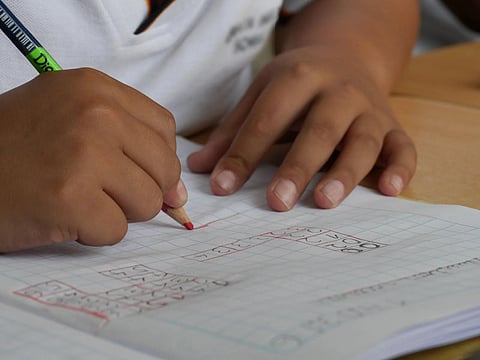

The provisional version of the Annual Status of Education Report (Rural) -- henceforth ASER 2022 -- came out on January 18, 2023. Not much of what it reported contained any surprising elements, but a few elements did. This was the first field-based 'basic' nationwide ASER, after a gap of four years (we shall call that ASER 2018 as it provides a baseline for what happened during the pandemic years).
I was not surprised to learn that "most children were especially weak in mathematics". More on this later.
Again, "[it] is no surprise that the availability of reading material other than textbooks has gone down from 6.6% to 5.2% households" over the last four years. This is a very dangerous civilisational tragedy. Are we relapsing to a "not reading but listening and watching" pre-modern normal?
Perhaps due to the economic stress of the pandemic period, there has been a shift from private schools to government schools. But at the same time, the percentage of children in both government and private schools who go to private tutors has gone up in all states. This is well captured.
That is, nearly a third of all rural children going to government and private schools are now also going to private tutors. This is highest in West Bengal (73.9%) and Bihar (71.5%), which are also the states that have nearly the lowest incidence of family education (in West Bengal only 13.8% of fathers and 13.7% of mothers have education up to STD X; the corresponding numbers for Bihar are 18.4% and 10.8% respectively.)
A hundred years ago, when free and compulsory education was mandated in Baroda and Kolhapur by enlightened rulers, India's literacy rate was barely around 11%. Since then, ASER reports that Access (School Enrollment) and Attendance issues are reasonably well resolved across the states, and it is the Achievement aspect that needs to be surveyed carefully.
Let us discuss the highest level of reading and arithmetic tests reported by ASER 2022. On pages 60 and 61 of the ASER 2022 Report, we have the state-wise maps showing the percentages of government school children in Std VIII who can read Std II level text and who can do division respectively, and the corresponding state-wise tables in 2018 and 2022. By juxtaposing the data in the tables as shown in the accompanying chart, we can display the read-arithmetic divide we spoke of earlier graphically. Each state is represented by a marker.
The farther away the point is from the dashed line, the greater the divide. The divide is greatest in Meghalaya.
The farther away the point is from the origin, the better the overall reading-arithmetic performance. Manipur, Mizoram, Punjab, and Himachal Pradesh (HP) in 2018, and all of these states and Bihar in 2022, stand out on this score.
The closest point to the origin, Jammu & Kashmir (J&K) is the most distressed state when it comes to rural school education. That learning levels are declining for both language and mathematics has been reported by National Achievement Survey (NAS) conducted in 2017 and 2021 (quoting Rukmini Banerji in ASER 2022).
One baffling surprise is that in a few states like Arunachal Pradesh, Assam, Manipur and West Bengal for the reading test, and Andhra Pradesh, Chhattisgarh, Madhya Pradesh, Tripura and Uttar Pradesh for the division test, the 2022 proportions outperformed the 2018 figures.
"It is as though school closure did not happen," in these states (quoting Madhav Chavan from ASER 2022). It would seem that missing school has a salutary effect on learning, perhaps because a hybrid mode of online intervention, parental interaction and private tuition helped in ways not imagined.
All in all, the value of the return of ASER 2022 as a field-based 'basic' nationwide exercise, after a gap of four years with children coming back to school after a pandemic-enforced closure of regular school, is clearly seen in these findings and others shared in the media and elsewhere.
(Gangan Prathap is an Honorary Professor at the APJ Abdul Kalam Technological University.)